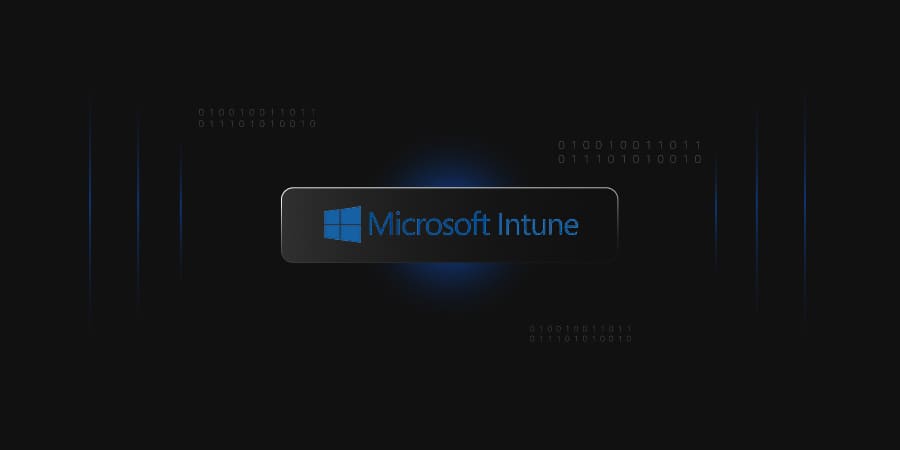Intune provides a variety of features and scenarios to help organizations manage their IT infrastructure effectively. The best-guided scenarios depend on the specific needs and goals of your organization.
Use case overview
Imagine a scenario where a company is rapidly hiring new employees, and the onboarding process involves providing them with company-owned or personal devices. The IT department at XYZ Corp wants a seamless and secure way to onboard these new employees, ensuring that the devices are compliant with security policies, applications are deployed efficiently, and corporate data remains protected.
Organizations primarily relied on traditional methods for managing their devices. These methods were often manual, time-consuming, and lacked the sophistication needed to handle the complexities of today’s diverse and dynamic digital landscape.
The scarier part is, that when not using a comprehensive solution like Microsoft Intune, organizations may face various cyber threats and challenges, leaving them vulnerable to potential risks.
Cyber Threats and Challenges
-
Data Breaches
Without proper device management and security policies, there is a higher risk of unauthorized access to sensitive data. This can lead to data breaches, where confidential information is exposed or stolen.
-
Compliance Gaps
Ensuring that new devices adhere to established security standards and policies is a critical hurdle. The absence of an automated solution increases the risk of overlooking crucial security configurations, making the organization more susceptible to cyber threats and data breaches.
-
Security Blind Spots
Traditional device management creates blind spots in security. Outdated software and unpatched vulnerabilities become open doors for cybercriminals to exploit.
-
Lost or Stolen
In the unfortunate event of a device being lost or stolen, ensuring the security of corporate data becomes a critical challenge. Without an automated response mechanism, the organization risks unauthorized access to sensitive information, potentially leading to data breaches and reputational damage to sensitive credentials.
Intune provided Services
-
Microsoft Intune automates the device provisioning process, significantly reducing time, and minimizing errors. Through Intune’s Autopilot service, devices can be pre-configured with necessary settings, applications, and security policies, ensuring a streamlined and error-free setup.
-
Microsoft Intune’s Compliance Policies continuously monitor device compliance. If a device falls out of compliance with security policies, Intune can take automated actions, such as restricting access or notifying administrators.
-
Intune enforces security standards and policies through its Conditional Access policies.
-
Intune simplifies application deployment with its Mobile Application Management (MAM) and Mobile Device Management (MDM) services.
-
Intune provides robust security measures for lost or stolen devices.
Best Practices
Harmonizing your device management with Microsoft Intune requires not just the right tools, but the mastery of best practices. These practical insights will empower the organization to unlock the full potential of Intune and ensure your digital ensemble plays in perfect harmony.
-
Implement RBAC
Imagine a chaotic concert with everyone scrambling for instruments! RBAC prevents such disarray by clearly defining who can manage what within Intune. Assign granular permissions based on roles, ensuring only authorized individuals access sensitive settings.
-
Enforce Strong Authentication
Weak authentication leaves your devices vulnerable. Enforce multi-factor authentication (MFA) to add an extra layer of security at login. Consider biometric methods like fingerprint scanners or hardware tokens for even greater protection.
-
Organization Needs
Configure Intune to the organizational needs. Prioritize compliance with industry regulations, data protection requirements, and internal security policies. Regularly review and update your Intune settings to reflect evolving needs and potential threats.
-
Use Conditional Access
Conditional Access acts as your digital gatekeeper, granting device access only if specific criteria are met. Block access to corporate data from non-compliant devices or restrict access to sensitive applications based on user location and risk level.
-
Automate Device Enrollment
Manual device enrollment wastes valuable time and resources. Embrace automated enrollment solutions like Windows Autopilot or Apple Business. Manager to seamlessly provision devices, minimizing user involvement and ensuring consistent configurations.
RBAC with Intune
Microsoft Intune’s Role-Based Access Control (RBAC) ensures the right people have access to the right functions. Let’s dive into the different roles available in Intune, both built-in and custom, to understand how you can ensure the perfect security and management symphony.
Built-in Roles
These pre-defined roles offer a convenient starting point for common scenarios.
-
Global Admin
The master of it all, with full access to all Intune settings and data. Use it sparingly and only for privileged users.
-
Intune Service Administrator
A trusted user, managing device enrollment, configuration, and compliance.
-
Application Manager
Tunes the digital services, deploying, managing, and configuring applications on devices.
-
Endpoint Privilege Manager
Sets the security perimeter, defining device configuration policies and access controls.
-
Policy & Profile Manager
Designs the rules and functionality, creating and assigning configuration profiles and compliance policies.
Custom Roles
Custom roles allow you to create granular access based on specific needs.
-
Help Desk Operator
Provides basic troubleshooting assistance, resetting passwords or resolving minor device issues.
-
BYOD Manager
Oversees personal devices accessing corporate resources, ensuring compliance with policies.
-
Compliance Officer
Monitors and enforces adherence to security and data protection regulations.
-
Device Management Specialist
Handles specific device types or platforms, like iOS or Android devices.
Conclusion
Microsoft Intune has proven itself a versatile tool for managing devices and applications. We’ve explored its multifaceted use cases, from app deployment and configuration management to robust security enforcement and compliance control. By implementing best practices like automation, strong authentication, and conditional access, you can streamline workflows, minimize risks, and optimize device performance. Furthermore, embracing Role-Based Access Control (RBAC) empowers you to have control, granting granular permissions to ensure only authorized users access specific functions.
Encryption Consulting provides Microsoft PKI services by integrating it with Intune, enabling features like Windows Hello for Business and remote device management. It empowers secure access from various devices while simplifying app management and policy automation. Microsoft Intune also integrates with mobile threat defense services and uses a web-based admin center to protect organizations’ data and focus on endpoint management.

